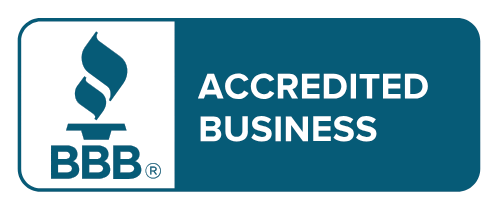Transform Your Space: Discover the Benefits of Full Home Remodeling for a Stunning Makeover
This is a subtitle for your new post

Building a custom home is a big step. It is a chance to create a space that fits your needs and dreams. This guide will help you understand the custom home building process in Charleston. You will learn what to expect and how to make your vision come to life.
Key Takeaways
- Custom homes reflect your style and needs, making them unique.
- Working with a trusted builder can help your project stay on track.
- The building process includes planning, design, and construction phases.
- Understanding local building codes is vital to avoid delays.
- Good communication with your builder leads to better results.
For more information about the unique characteristics of different neighborhoods in Charleston, check out our guide on local community features.
What is a Custom Home?
A custom home is a house designed specifically for you. It is built according to your preferences, lifestyle, and requirements. Unlike standard homes, which are built with a one-size-fits-all approach, custom homes allow for personal touches. You can choose the layout, materials, and features that matter most to you.
Why Build a Custom Home?
Building a custom home gives you control. You get to decide how many bedrooms you need, what kind of kitchen you want, and the style of your living space. In Charleston, many people prefer custom homes because they reflect the local charm and character. You can include elements like large porches and open spaces that fit the warm Southern climate.
The Custom Home Building Process
Building a custom home involves several key steps.
Step 1: Planning Your Dream
Before you start building, you need to plan. Think about what you want in your new home. Make a list of must-haves and nice-to-haves. Consider your lifestyle and how the home will fit into it.
Step 2: Finding the Right Location
Selecting a good location is crucial. Charleston has many beautiful neighborhoods. Look for areas that fit your lifestyle. Whether you prefer a bustling downtown or a quiet suburb, make sure the location meets your needs.
Step 3: Choosing the Right Builder
Finding a trusted builder is one of the most important decisions you will make. Look for a builder with a strong reputation in Charleston. Read reviews and ask for recommendations. A good builder will guide you through the process and ensure your home is built to your standards.
Custom Home Design
Once you have a builder, it is time to focus on the design of your home. This stage is where your vision will start to take shape.
Working with an Architect
Many builders in Charleston work with architects who can help bring your ideas to life. An architect will help you create a floor plan that matches your needs. They will also ensure that your design meets local building codes.
Choosing Materials and Finishes
During the design phase, you will also select the materials and finishes. This includes choices for flooring, cabinetry, countertops, and more. Think about quality and durability, especially given Charleston’s climate. You want materials that can withstand heat and humidity.
Material Type Pros Cons Wood Aesthetically pleasing Prone to warping Brick Durable and low maintenance Higher initial cost Fiber Cement Siding Fire resistant Requires painting over time Stucco Excellent insulation Can crack in humid climates Navigating Building Codes and Regulations
In Charleston, like elsewhere, there are rules for building homes. These rules ensure safety and quality. Your builder will understand these codes and help you navigate them. It's important to follow these regulations to avoid delays and extra costs.
The Construction Phase
After planning and design, it's time to break ground. This is when the actual building happens.
Site Preparation
The first step in construction is site preparation. This involves clearing the land and making sure it is ready for building. Your builder will handle this, so you can focus on other aspects of your new home.
Laying the Foundation
Next, the foundation is laid. This is a key step because it supports your entire home. Your builder will ensure the foundation is strong and meets local standards.
Building the Structure
Once the foundation is set, walls, roofs, and floors are built. This is when your home starts to take shape. You can visit the site often to see progress. It is exciting to watch the construction unfold.
Installing Systems and Finishes
After the structure is built, systems like plumbing, electrical, and HVAC are installed. Then, interior finishes are added, such as floors, cabinets, and paint. This is where your style and choices come to life.
Tips for Staying Involved During Construction
- Regularly visit the construction site to monitor progress.
- Schedule weekly updates with your builder to discuss any questions.
- Keep an open line of communication for addressing concerns.
Your Role in the Process
Even though your builder will handle most tasks, you play an important role, too. Stay involved and communicate with your builder regularly. Ask questions and express any concerns. Good communication can help avoid problems down the road.
Managing Expectations
Building a custom home can take time. It is important to manage your expectations. Delays can happen, but a good builder will keep you informed. Being patient and understanding will make the process smoother.
Celebrating Milestones
As your home nears completion, celebrate milestones. Each stage from the framing to the final walk-through is a step closer to your dream.
Moving In
Finally, the big day arrives. You are ready to move into your new home.
Final Walk-Through
Before you move in, do a final walk-through with your builder. Check that everything meets your expectations. Make note of any final touches that need to be completed.
Getting Settled
Once you have the keys, it is time to settle in. Unpack, decorate, and make the space your own. Enjoy the new features and enjoy your home.
The Benefits of Custom Homes
Building a custom home offers many advantages.
Unique Design
With a custom home, you can create a unique design that fits your style. This home will be a true reflection of you and your family.
Quality Craftsmanship
Choosing a reputable builder means your home will be built with quality craftsmanship. You can trust that your home is built to last.
Energy Efficiency
Many custom homes are designed with energy efficiency in mind. You can choose materials and systems that lower energy costs and reduce your environmental impact.
Benefit Description Additional Notes Unique Design Tailored to your preferences Enhances personal satisfaction Quality Craftsmanship Built by skilled professionals Often comes with warranties Improved Energy Efficiency Lower long-term costs with sustainable choices May qualify for tax incentives Increased Property Value Potential for higher resale value Attracts discerning buyers Increased Property Value
A well-built custom home can increase in value over time. When you decide to sell, having a custom home can attract buyers looking for something unique.
Conclusion
Building a custom home in Charleston is an exciting adventure. It allows you to create a space that meets your needs and reflects your personality. From planning to moving in, each step is important. Work closely with a trusted builder, communicate openly, and enjoy the process.
Whether you want a cozy cottage or a grand estate, custom home building is a chance to create something special. Take your time, make thoughtful choices, and soon you will have the home of your dreams.
With this guide, you have the tools to start your journey. Building a custom home is not just about bricks and mortar. It is about creating a place where memories are made and dreams come true. Enjoy every moment of the process!
For more insights on enhancing your home's value, explore our section on property value improvement strategies.






